Take a seat with Salini Vineeth on her time-bending voyage across the splendorous Hampi…
Centuries ago, a queen might have stood in this very place, watching the tangerine glow of the sunset reflecting on the city below.
Standing on the Hemakuta hill, I muse. Time, like an unfathomable ocean, lies between her and me. Centuries after the Battle of Thalikota, Hampi is still charming with its temples, palaces, pushkarinis, pavilions, and collonades. I wish I could time travel and witness the ancient Hampi—the splendorous capital of the Vijayanagara empire.
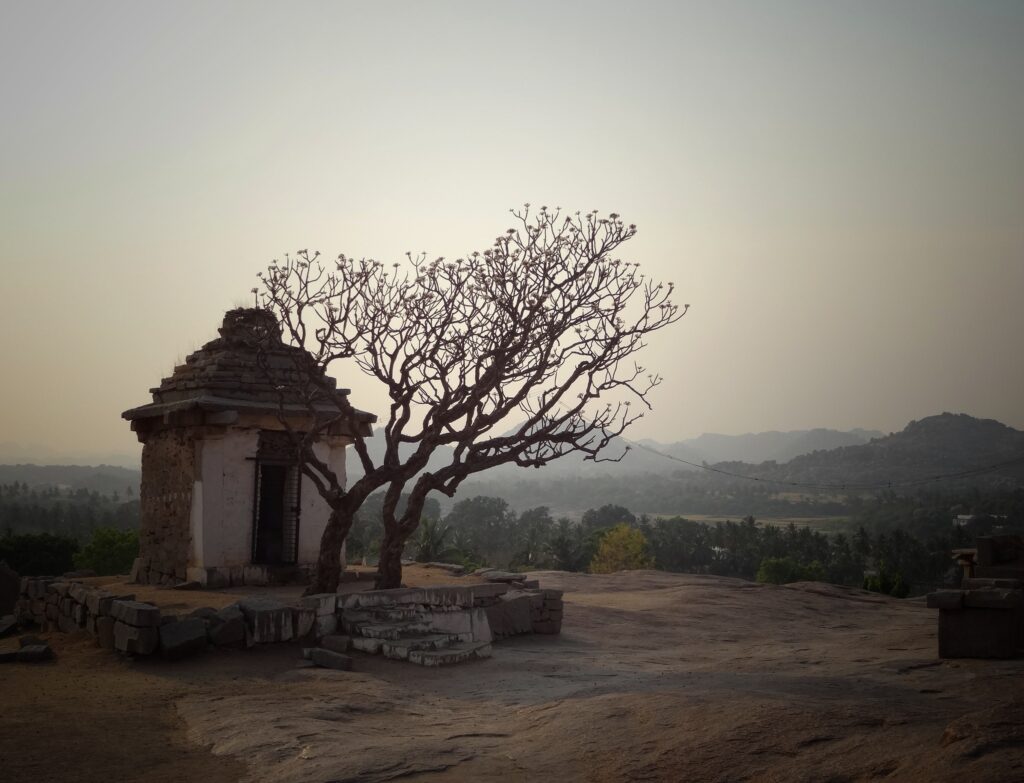
Maybe my body cannot travel back in time, but my imagination can.
Time runs backward, at the speed of light. I see the army of Deccan Sultanates ransacking Hampi, destroying its grand temples and palaces, setting them on fire, sledgehammers heavily falling on pillars. No, no. I don’t want to be here.
I flick backward and skip a millennium. I see a young girl, Pampa, daughter of Brahma. She flows like a river through this land. She is infatuated with this tiger-skin-clad, ash-covered sage doing penance on a small hillock. His name is Shiva(Virupaksha). With the help of Kamadeva, the God of love, she wins over Shiva and gets married on the same hillock. On their wedding day, the skies open, and it rains gold on them. Hence the name Hemakuta—the golden hillock. Pampa becomes the local deity, and the realm of Pampa becomes Pampa-kshetra, and later, Hampi.
Even now, during sunset, the enormous boulders of Hemakuta hills shimmer like gold.
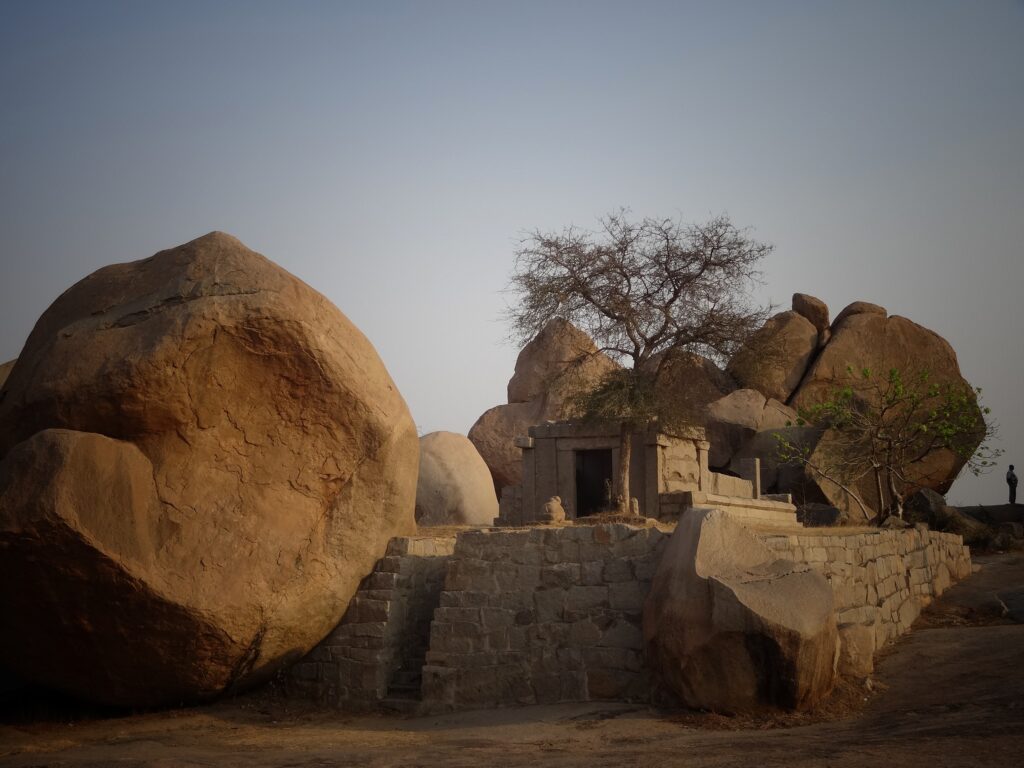
I fast forward. Mauryas, Satavahanas, Kadambas, Chalukyas, and Rashtrakutas— dynasties flick past, and the time dial stops at 1356. I see two ambitious local chieftains, Bukka-Raya, and Harihara of the Sangama dynasty. They are determined to make Hampi the greatest city in the world. The ascent of Hampi starts. Later, the kings of Vijayanagara, successors of Bukka and Harihara, pour their wealth into Hampi. They erect temples, palaces, forts, pavilions, markets, and casinos.
Suddenly, the fabric of time tears, and I fall through a crack, back into the present. I look at the Hampi Bazaar street, now all deserted with rows of crumbling colonnades on either side. The lonely monolithic bull stands like a silent spectator at one end of the street. “Come with me, I will show you the wonders of this street,” it tells me.
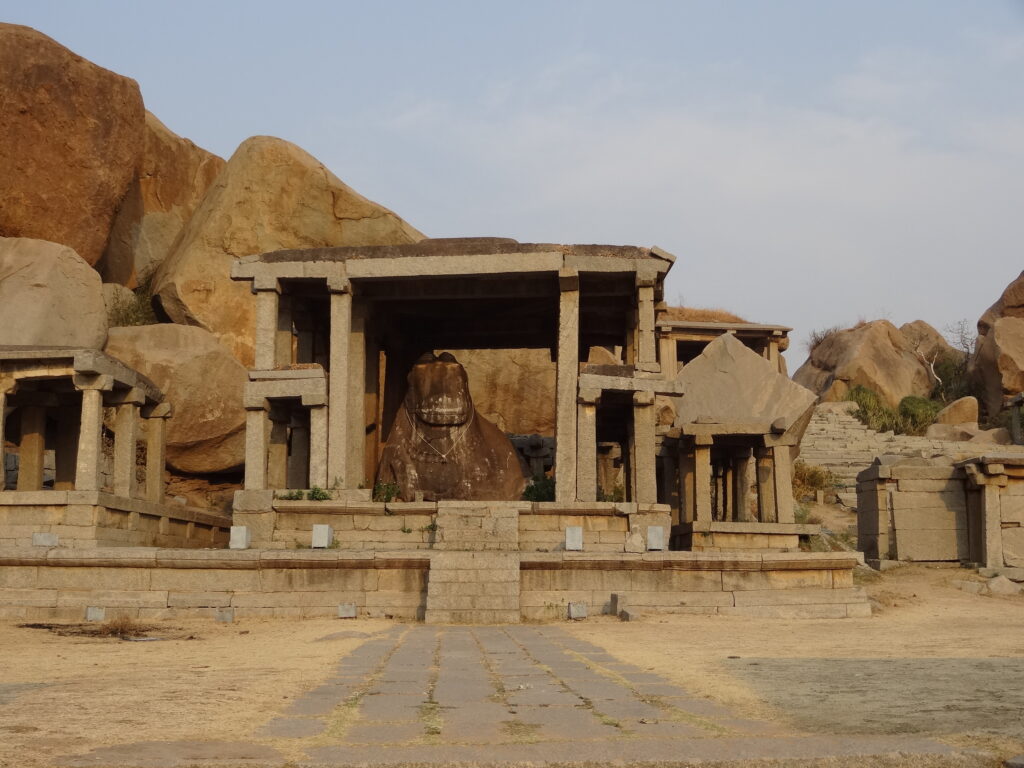
I accept the invitation. We hop centuries at a time and stop in 1509. It’s the rule of the great Tuluva king, Krishna Devaraya. Hampi Bazaar is now a bustling market, with the Virupaksha temple at one end and the glittery-new monolithic bull at the other. I see merchants in their garish garments and fancy turbans. Business is flourishing. They sell pearls, rubies, and emeralds by their measuring jars. They pick up golden bricks from their shelves and drop them into the leather bags of their wealthy customers.
I open my eyes, and everything is gone in an instant. The grand gopura of Virupaksha temple stares back at me.
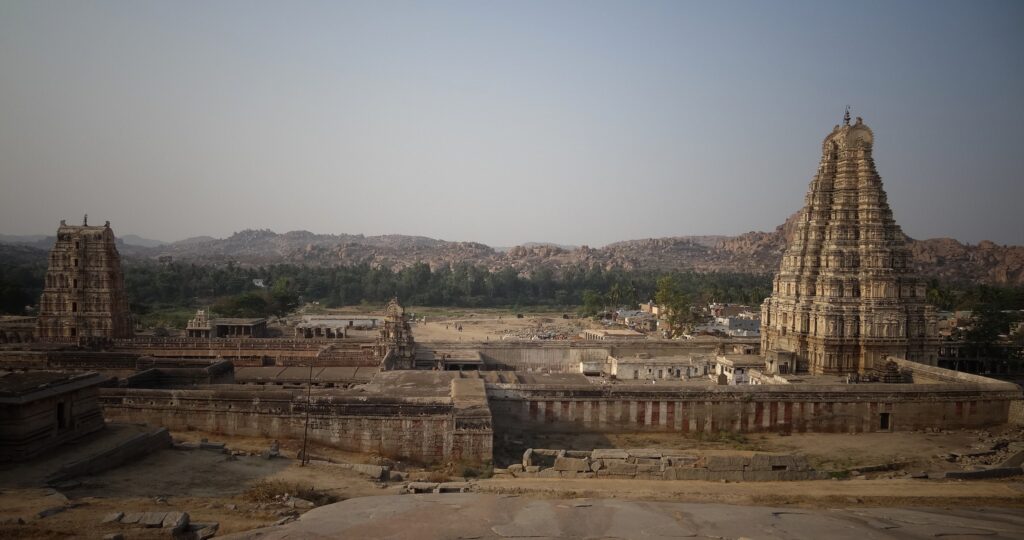
In a frenzy, I flick the time again. It turns out-of-control, like the pages of a book. I end up in the Treta Yuga. It’s not Hampi yet. It’s the ancient Kishkindha – the kingdom of the Vanara tribe. I look at the Anjanadri Hill, and I can see the little Hanuman jumping up at the sun, trying to catch the golden orb.
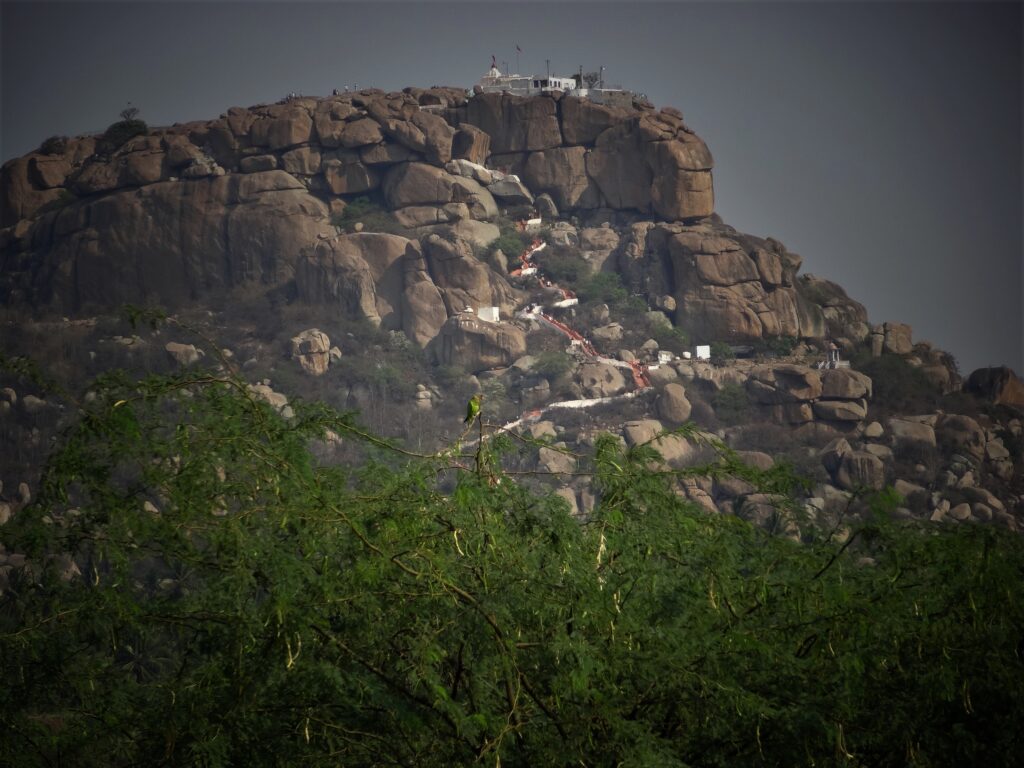
A few years pass. Hanuman has now grown up into a legendary warrior and has dedicated his life to Lord Rama. A coronation is in progress at the Kodanda Rama Temple. Vanara king Sugriva is being coronated as the king of Kishkindha after defeating his brother Vali, with Lord Rama’s blessings. I silently watch the proceedings, and during the coronation, I clap my hands in reflux, and every eye of the Vanara tribe is on me!
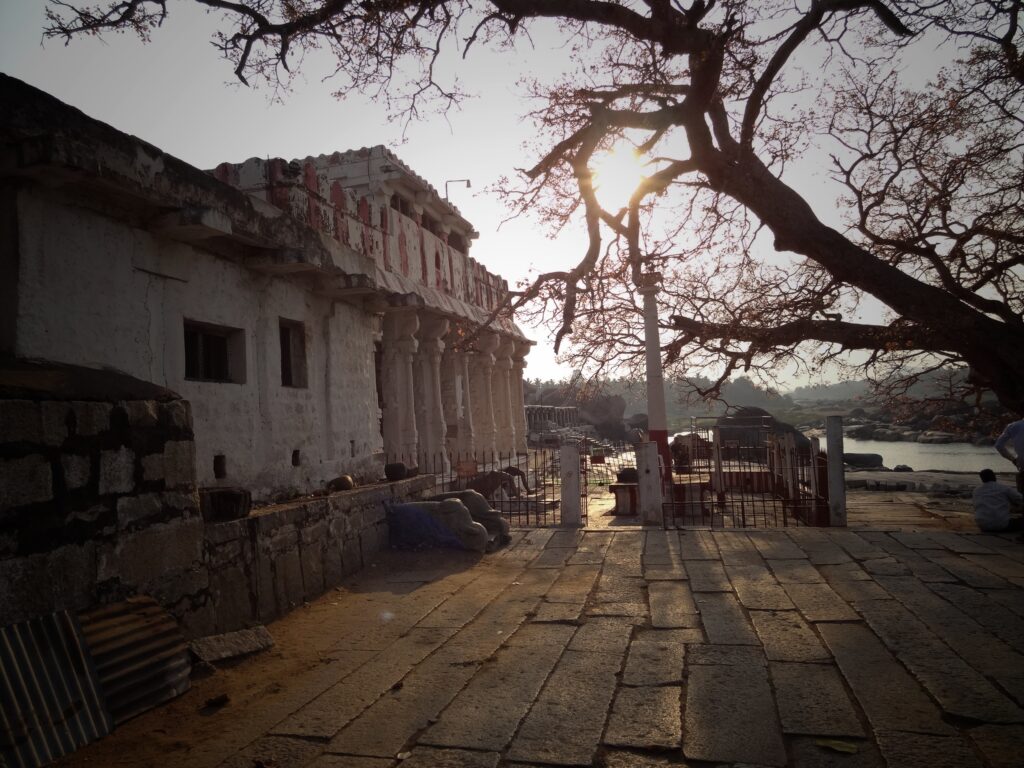
Suddenly, I am thrown back into the present. I am on the bank of River Tungabhadra. In the distance, a coracle is floating on the waters. It is fickle, like my sense of time.
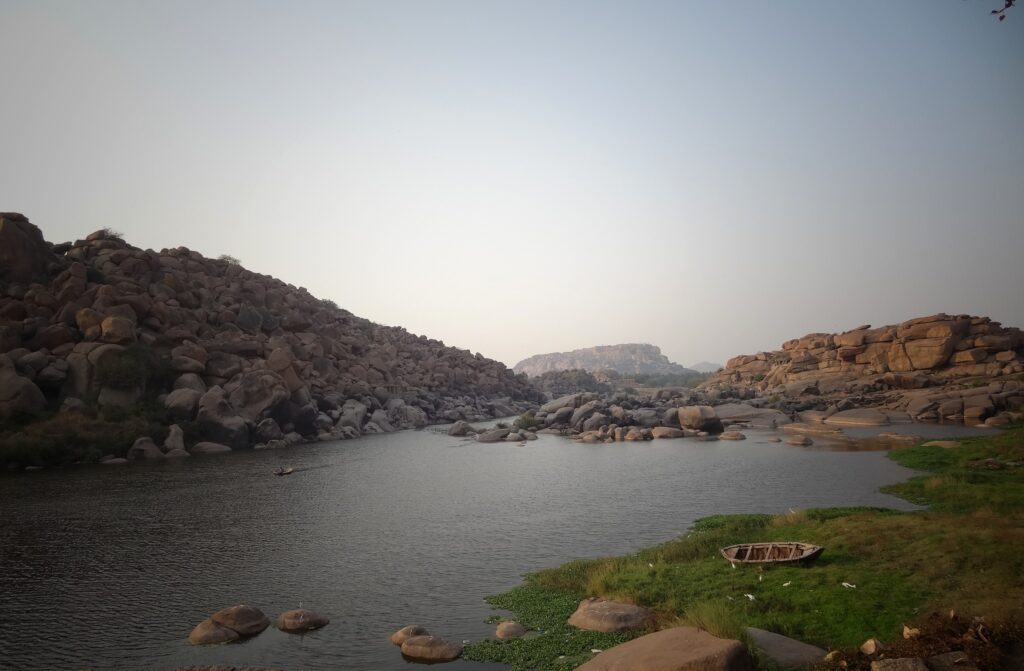
Like that coracle swiftly spinning in the water, time spins backward. It’s the year 1565. I find myself standing in front of Achyuta Raya temple, looking at the street in front of me. It has rows of mansions on either side. Suddenly, a burst of laughter startles me – like the tinkling of a silver anklet. I look around and see a pair of kohl-lined eyes peering at me from the latticed windows of a mansion.
This is the ‘soolai bazaar’– the courtesans street. The royal courtesans practice the art of making love – Kamasutra. Pleasure is dripping through the street, like honey from a flower. A palanquin passes me. It stops a little ahead, its curtain parts, and an apsara looks at me, her pan-stained lips parting into an intoxicating smile. The palanquin enters into the Achyuta-Raya temple, and I follow.
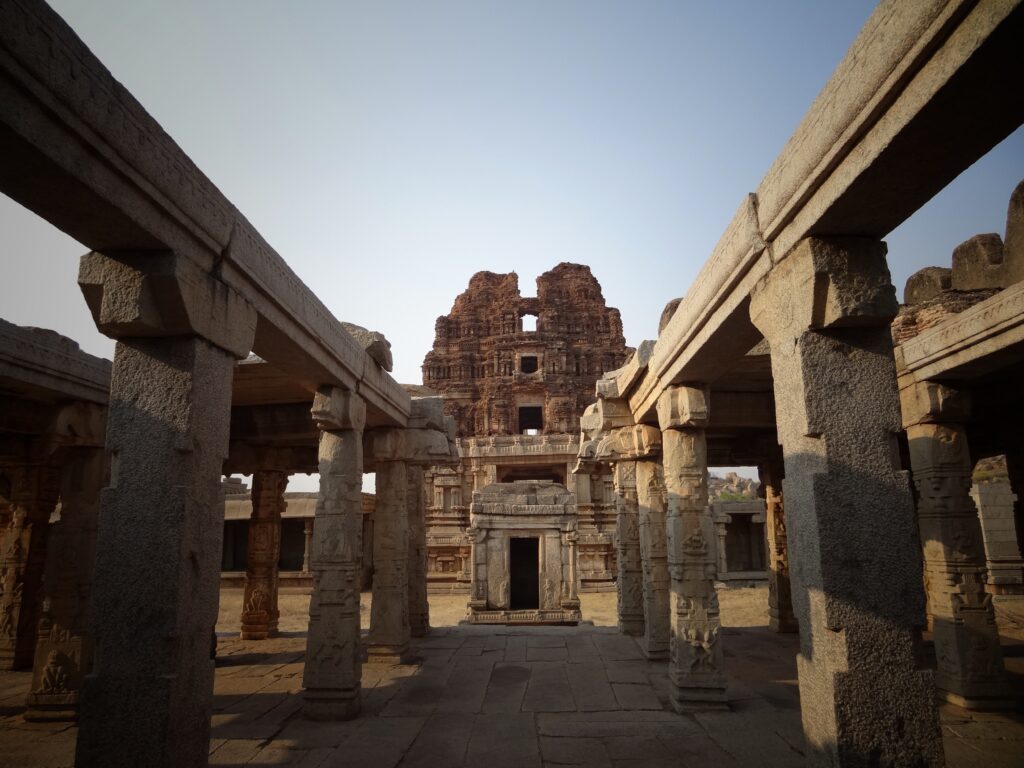
A marriage ceremony is about to begin in the kalyana-mantapa (marriage platform). I gawk at the erotic sculptures on the pillars. Sex isn’t a taboo in 16th century India. It’s a celebration of love, and courtesans enjoy position and wealth. I see the European invasion and British rule – how our standards of morality have changed!
Suddenly everything changes. I find myself alone in the courtesan street—not a single soul in sight. An uncanny silence surrounds me as I walk to the ruined gopura of Achyutaraya temple. Gandhamadana and Matanga hills stand like silent spectators on either side. Were those courtesans really happy? Or were they forced to put on the façade of lust and happiness? A strange melancholy fills me.
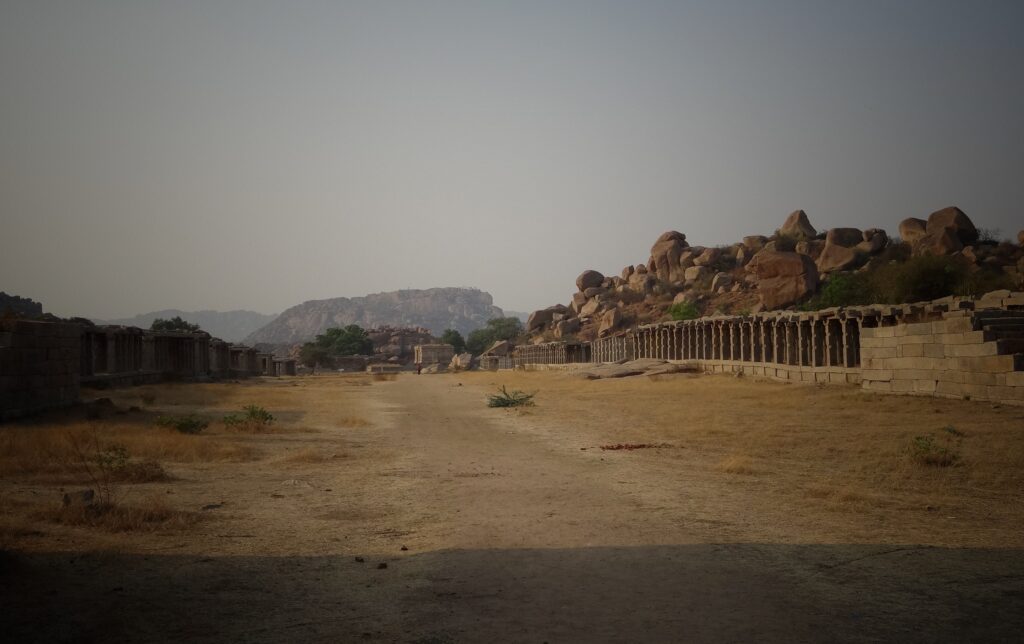
I hear a piece of unearthly music, and I drift along the banks of Tungabhadra. Sitting in his favorite mantapa, Purandara Dasa is singing about his deity, Vittala—Vishnu, in the form of a young boy. I sit across the great musician. He smiles at me and sings a beautiful composition about how all of us are equal – every religion, caste, men, and women. My heart fills with joy, and a cool breeze from the Tungabhadra River caresses me.
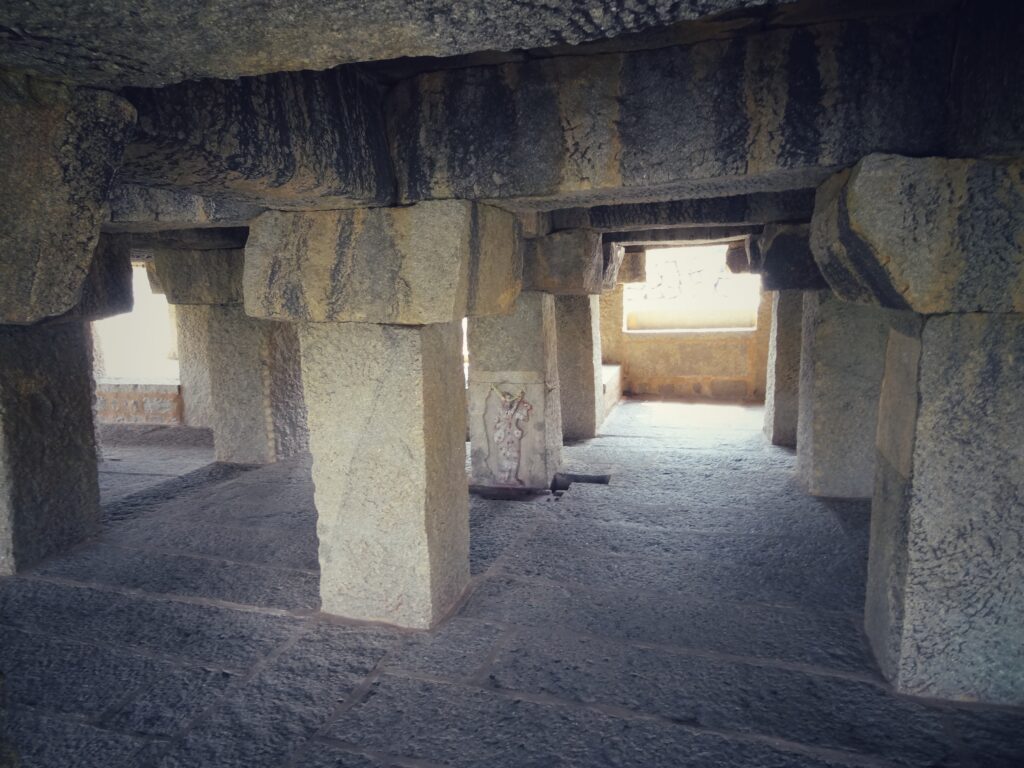
I drift again, and the next minute I am inside the beautiful courtyard of Vittala temple, right next to the stone chariot. I walk to the maha mantapa, the great pillared hall. I am lost in its wonders – musical pillars, bas-reliefs of Makara and Yali, brightly painted ceilings, the sanctum of Vittala gilded with gold.
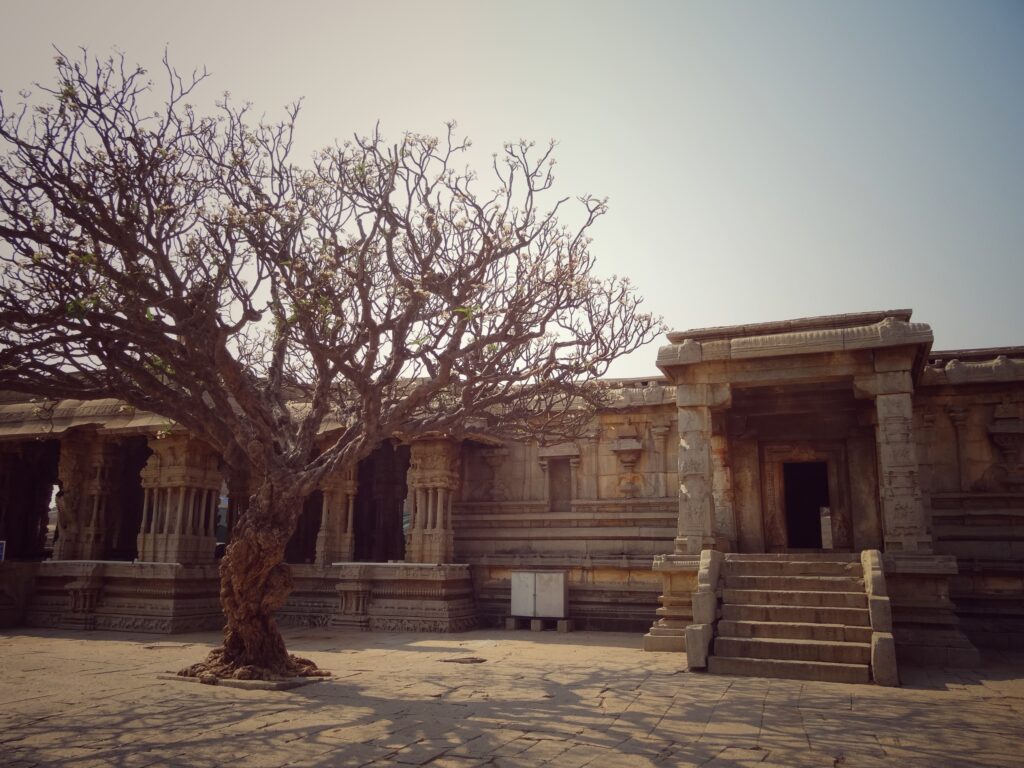
Suddenly, there is a bustle. Thirumala Devi, the chief-queen of Krishnadevaraya, is here to offer her prayers. I quietly follow as her palanquin enters into the Zenana enclosure—where the queens live. I stand, stunned, in front of a pink palace that reminds me of a lotus.
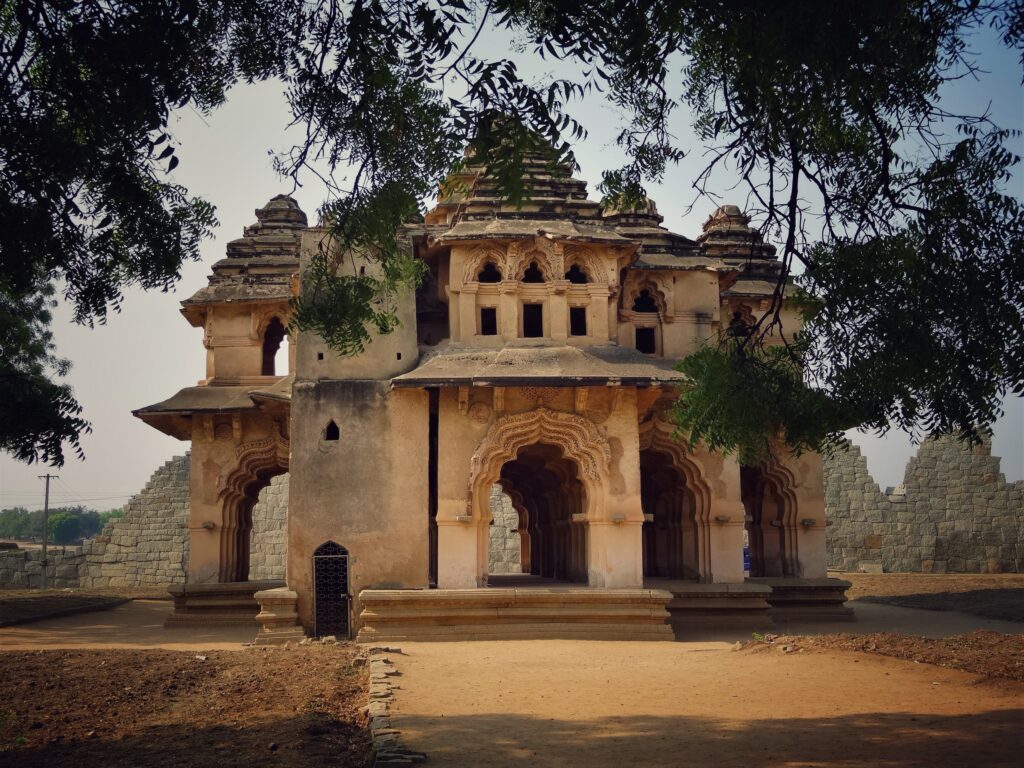
It’s a wonderworld – huge palaces gilded with gold, water-fountains, step-wells. The garden has every kind of flower imaginable. The fragrance of musk, sandalwood, marigold, and betel leaves flood my senses. I hear the uplifting voice of anklet bells and drift towards a pavilion where girls in dark silk saris dance. I am lost in this magical world, the world of splendor and joy.
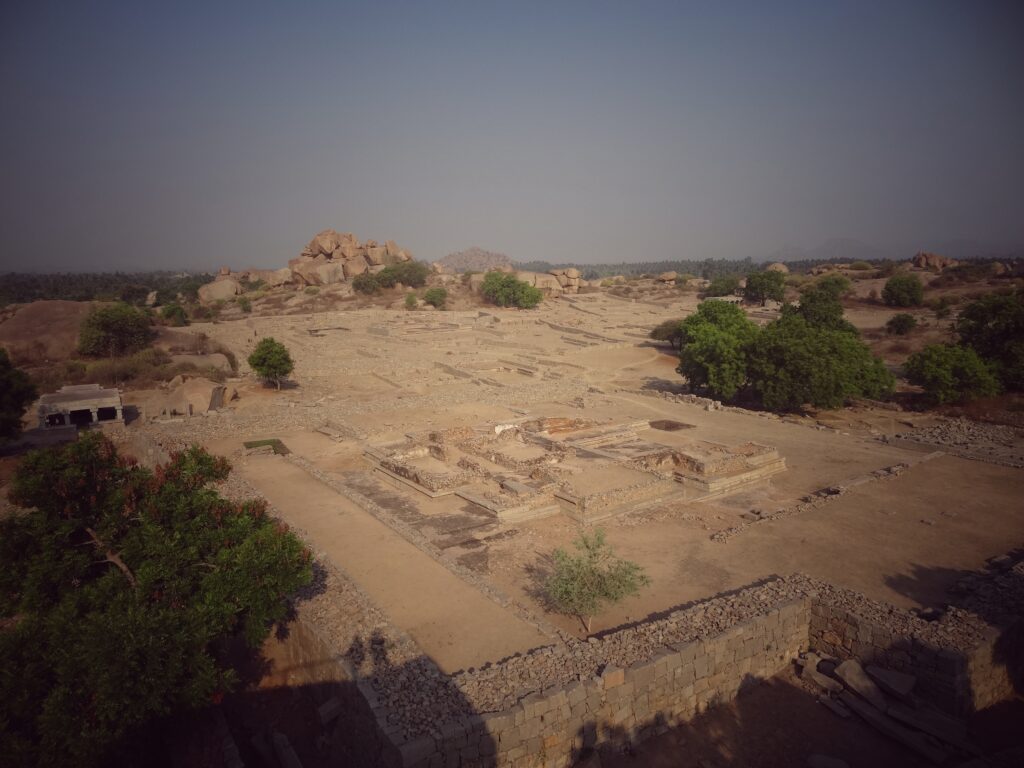
Then I hear clops, a thousand horses galloping to the royal center. It’s the army of the Delhi Sultanates – they sow destruction, like a wildfire consuming a forest. I hear screams and shouts. The glorious capital of Vijayanagara has fallen.
Every inch of this splendorous city is pillaged, palaces are burning, sledgehammers are falling on temples. I am back, standing on this arid land of colossal rock boulders, deserted temples, and ruined palaces. The sun is about to set on the erstwhile glorious kingdom.
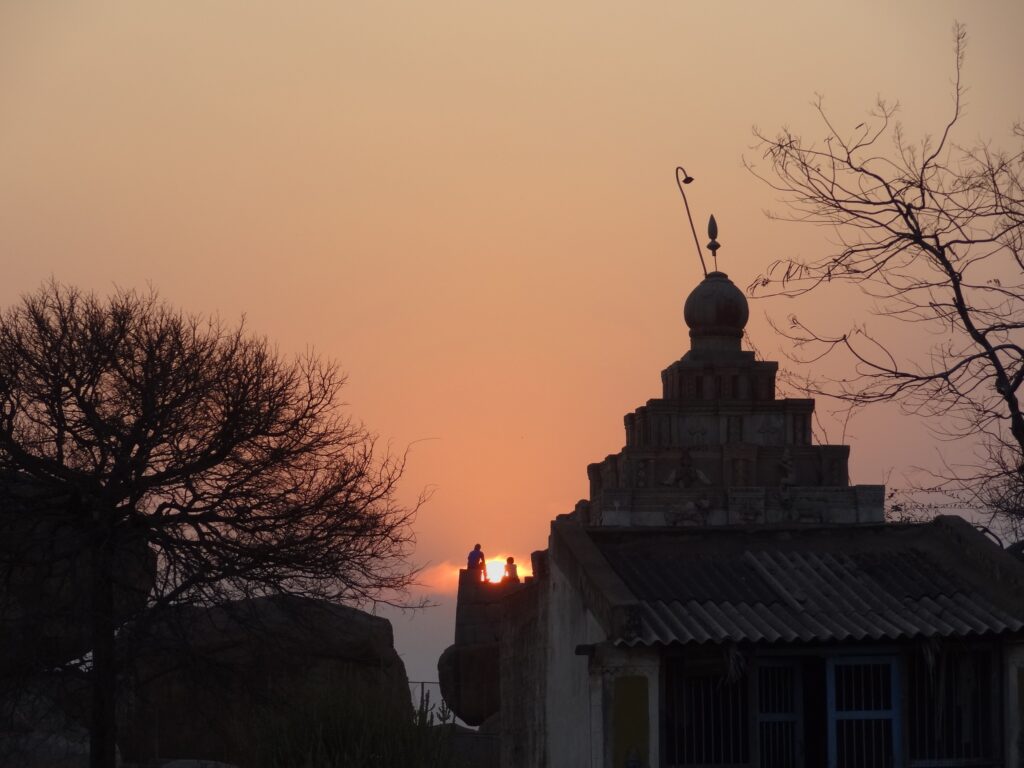
How I wish I could stay in the ancient Hampi forever! But, no matter how battles have ruined it, Hampi still has a melancholy charm. She draws in seekers like me and tosses us into a time machine. I can’t agree more with Abdul Razzaq, an ancient Persian traveler:
“The city of Bidinagar (Hampi) is such that the pupil of the eye has never seen a place like it, and the ear of intelligence has never been informed that there existed anything to equal it.”
Salini Vineeth is a fiction and travel writer based in Bangalore. She is the author of the book Hampi – History and Architecture. She is an avid traveler who has a keen interest in the history and architecture of ancient India. She often writes travel articles on her website, Pick, Pack, Go. She has also published a book on Badami – History and Sculptures. She has also published two fiction books – Magic Square (novella) and Everyday People (short story collection). She has contributed stories to several anthologies and has been published in many literary magazines in India.
Photos by Vineeth Chandran.
Find The Mean Journal on Instagram @MeanPepperVine
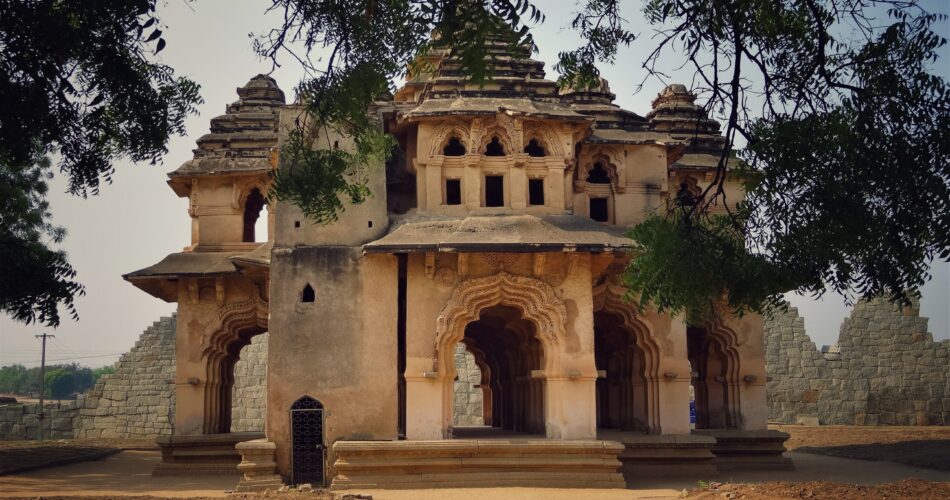
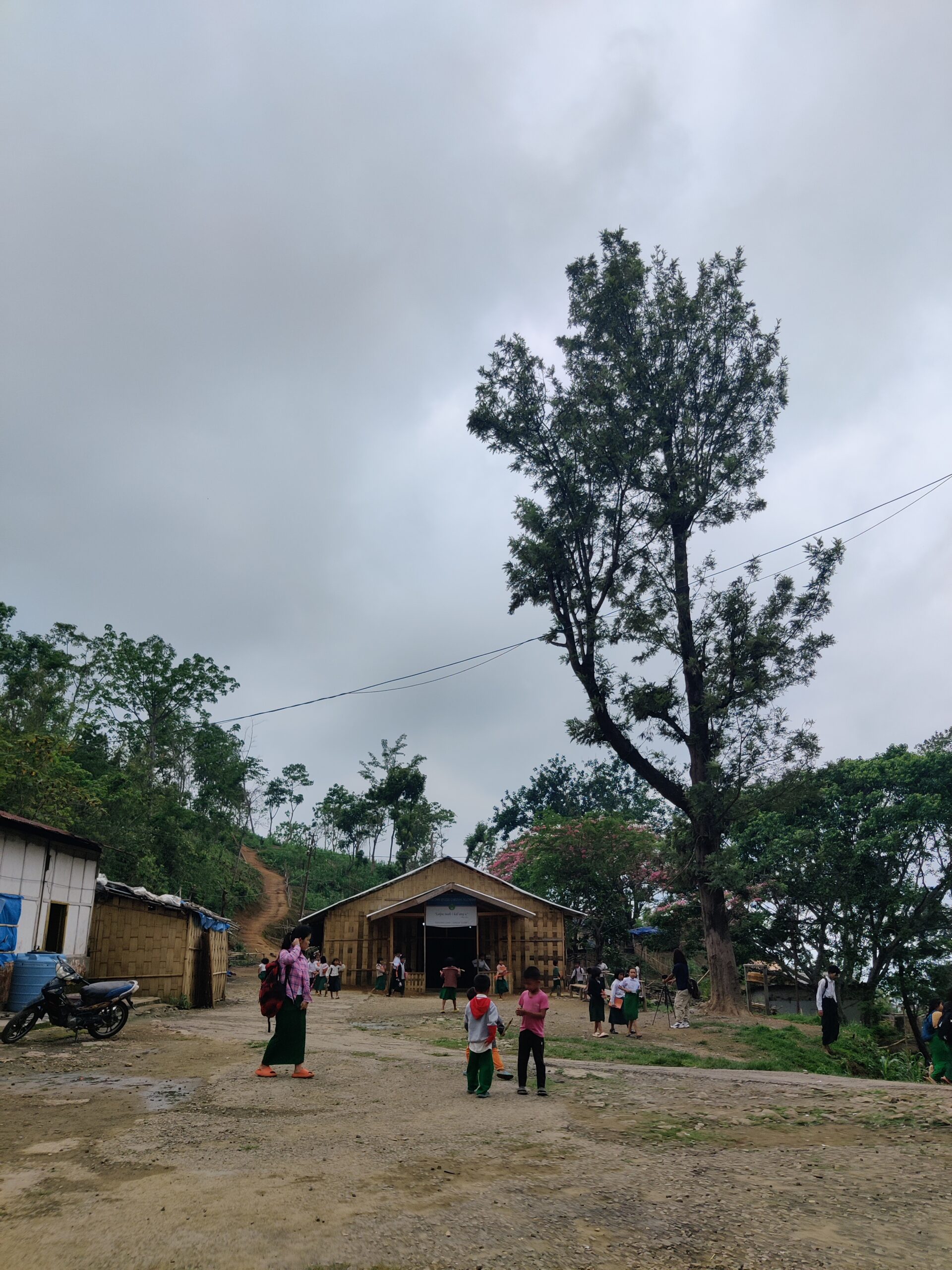

A very interesting narrative.
Great content! Keep up the good work!
I still remember my trip to Hampi in 2019. What a glorious sight! If it’s remnants and ruins can grip your imagination , one can only fathom the life it held in the past. A great read for one who has been mesmerised by Hampi
A beautifully written and imagined piece. I love Hampi too. I first visited it as a copywriter writing tourist brochures for Karnataka Tourism. I returned again and again and more stories were born.